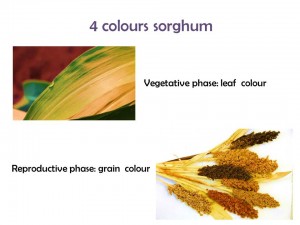Sid Thomas and Richard Marggraf Turley participated in Strata: Art and Science Collaborations in the Anthropocene, a Symposium held at Aberystwyth University Arts Centre on 15 January 2016.
Here’s the abstract of the paper Sid delivered.
Green sorghum, yellow sorghum, red sorghum, white sorghum
Howard Thomas, Jayne Elisabeth Archer, Richard Marggraf Turley, Helen Ougham
Sorghum is a staple dry land subsistence food crop for millions of resource-limited farmers in the fragile drought-prone semi-arid tropic regions of Asia, Africa and Latin America. From the perspective of agricultural sciences and the literary and visual arts, this paper explores the biological significance of colour in the vegetative and reproductive phases of the sorghum lifecycle, and considers the broader Western cultural significance of those two colour stages in crops, of which sorghum is an example. By being in the front line of responses to climatic and environmental change, sorghum is a target for the application of advanced agricultural technologies (the ‘New Green Revolution’). But, as this paper concludes, the history of social, political and cultural encounters with applications of science in the areas of crop and environmental sciences is not a happy one, with difficult implications for dealing with the challenges of the Anthropocene.

